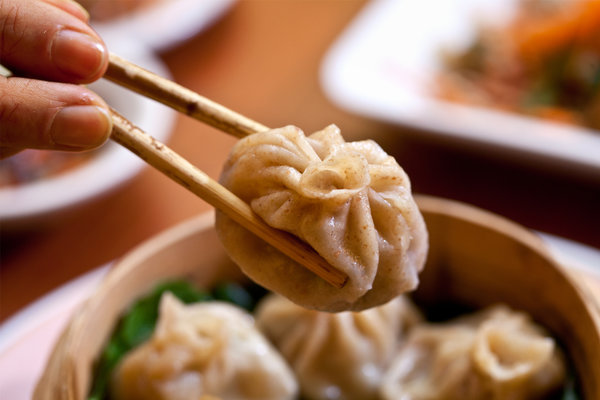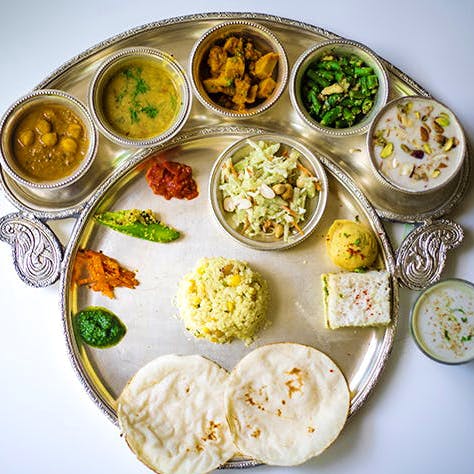What Is The Difference Between Indian Food and Nepalese Food?

We Indians enjoy spicy and flavorful foods. But do we understand the distinction between Nepalese and Indian cuisine? The majority of us are unable to distinguish between the two. Both cuisines share a common theme of exoticism and spice. Let’s have a look at the differences.
Tibetan and Chinese cuisines, in particular, primarily influence Nepalese cuisine. However, we must not overlook the spice of Indian flavors. As can be seen, India and China use the same spices, and their fondness for curry and rice remains unchanged. The Indians prefer thick, creamy, and sweet foods, whereas the Nepalese are the polar opposite. They may cook and chop in somewhat different ways, but the combination of flavors distinguishes them both.
Do you still have questions regarding the distinctions?
First, allow me to introduce you to Asian-inspired cuisine. Because Nepal has its distinct cuisine, Indian spices such as turmeric, chilies, ginger, and garlic are still used. I’m sure many of us want momos and the chutney that goes with them. Isn’t it true that everyone is looking for the perfect and delectable Darjeeling momo?
Nepalese people, like Indians, have a true passion for rice, preferring to eat Pulao with butter or ghee, yogurt, or papadums. In contrast to India, Nepalese people prefer soup and rice at times. As far as side dishes go, we favor dal or curry. It isn’t to say they don’t eat dal and curry. It’s all about personal preferences. Chutneys are ubiquitous, and they go with everything, whether spicy or sweet. Cardamom, cumin, cloves, cinnamon, onion, garlic, dry ginger, turmeric, red chilies, fenugreek, mustard, and coriander are all used to make the distinctive Nepali chutney that everyone adores.
Dhido or Naan?

Each country’s cuisine is distinct in its manner. Indians prefer naan with butter and spice-cooked side dishes, making it hefty and flavorful. When I think of Nepal, I think of a dish called Dhido, or Dheedo, a buckwheat flour porridge that appears to be simple. It’s usually served with a gravy of chicken or pork and some vegetable preparations. The second distinction is in the type of soups preferred by Nepalese. Thukpa is a noodle soup flavored with chicken; however, vegetarian thukpa is also popular.
Do you favor momos, and if so, where do you get them?

The more we talk about Nepal, the more we want to eat momo and chutney. Nepalese food is lighter, although it may be hot at times. They use less cream or milk than Indian cuisine. They frequently include species as well as butter or ghee. I sometimes believe that both cuisines are similar, yet the small details of cooking distinguish them. A person will immediately recognize the difference in momo flavor between the two countries. First and foremost, they differ in taste, size, and shape. After experiencing true Nepalese momo, one may not like Indian momo.
Is it true that vegetables make a difference?
Apart from the spices, vegetables are a common ingredient in both dishes. Tomatoes, potatoes, and lentils are all widely available. While being tossed in a pan, their structures shift. Indians do the same thing, but they add other vegetables to the mix. Onion is used in almost all of the foods that are presented. Most of the vegetables are stir-fried and served. The vegetables have a crisp, non-soggy flavor to them. Indians prefer to deep fry their vegetables with a more incredible amount of spices. A few features of both cuisines make them unique and delicious.
Do borders alter the flavor?
Nepal is bordered by both India and China. However, the majority of Nepalese adhere to Hinduism. They do not believe that Hindus must be vegetarians, unlike in India. It has a significant impact on how food is prepared in both countries. Meat (chicken, goat, pork, or beef) and stir-fried veggies are common in Nepalese cuisine. Things may be different in India.
Nepalese and Indian culinary traditions

The phrase ‘Thakali’ comes up frequently when discussing traditional Nepal. Are you curious as to what this phrase means? It’s Nepalese food at its most authentic. Even though Nepalese cuisine is influenced by Asian cuisine, you will not compromise the authenticity of traditional Nepalese cuisine. In both countries, the traditional culture of fine cooking is crucial. In Indian cuisine, there are two options for the Thukpa and Dhido recipes. Although the delicacy of noodles in soup is a famous dish cooked in Nepal, the notion of eating noodles regularly may be unappealing to Indians. Dhido is very popular in mountainous places when the environment is cold.
The vegetables in Nepal are stir-fried rather than mashed. They have a chunkiness and are served hot on a plate with flavorful spices. In India, we like to use more spices and purée or smash the vegetables. The velvety texture of flavorful spicy vegetables appeals to us. We even deep fry it and sprinkle the ‘masalas’ on top. Daal bhat tarkari is also popular among Nepalese, albeit slightly from Indian varieties. They add lentils to the broth and season it with spices before serving it with bhat.
This soup complements any food. Their curry is typically made using lentils and spices in curry powder. We’ll wonder why momo has such a distinct flavor if I row down.
The answer is simple: spices, herbs, types of meat, and dough thawing method make a difference. Typically, they cook dim sums using minced meats such as chicken, pork, or beef. It is then stir-fried with your chosen vegetables, onion, and cabbage being the most typical fillings. The veggies are stir-fried with minced beef, and flavorful sauces are added with salt and pepper. Red pepper paste is occasionally used to make it spicy.
Indians want to keep things simple; therefore, they favor chicken as a meat option and veggies such as onion and cabbage. They stir fry, but use less sauce in the stuffing, then wrap the ingredients in the dough before steaming.
Nepal is known for Chatamari, in addition to the famous appetizer. I wasn’t sure if this was a pizza the first time I saw it. Although the dish resembles pizza, the toppings, such as cheese, are omitted. Meat, tomatoes, and onions dominate the toppings. Whether an appetizer or a central portion, every dish is peppered heavily in Nepal.
The food and culture of India are noted for their diversity. Every Indian has a unique palate. We go from chats to mutter paneer to biriyani, and so on, as we travel from north to south. We enjoy spiciness and butter in our meals, so it’s creamy and heavy. For every Indian, ‘chat’ is the most famous street meal. Let’s take a look at some of India’s most popular foods.
It’s a type of street cuisine with a crispy or fried bread base, chutney, onions, and ‘bhujia’ on top. It’s also served with yogurt or ‘dahi.’
Then there’s paneer, another favorite dish. It’s made using various ingredients, including peas or mutter, palak (spinach), butter, and more. Cooking is a very different procedure. We prefer to make it ‘malai paneer’ by adding heavy cream. We use this dairy product to build massive dishes. The gravy is produced with ginger, garlic, onion, yogurt, and spices, sautéed, and mixed thoroughly. The situation is a little different for non-vegetarians. They favor mutton or ‘rogan josh,’ however, you may substitute lamb at times.
Northern Indian cuisine is well-known throughout the world; it is flavorful and complex, incorporating a variety of spices and ingredients. In India, dishes like butter chicken and chicken tikka Masala are trendy. The marinated chicken, flavored with spices, herbs, and yogurt, adds depth to the flavor. Food that is flavorful and served hot, on the other hand, is a delight.

While we’re working out the distinctions, let me tell you that Nepalese cook their food in a much healthier method than Indians. They don’t add anything to the flavor, but they aren’t any less tasty.
- Heavy cream on their dish, regardless of the flavor.
- They eat much naan
- They don’t use sweeteners or sugar in their food.
So, what are you waiting for? Pack your bags and embark on a never-ending quest for foods that will revitalize your spirit, mind, and heart.











